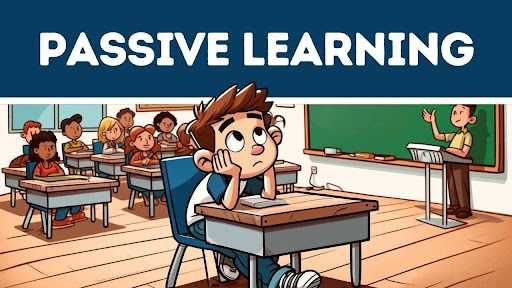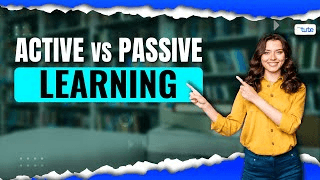
American summer tour! Wooclap will be at InstructureCon 2025
Come say hi at booth 41 from July 22nd to July 24th in Spokane, Washington
What is Passive Learning?
📌 Passive learning describes an educational approach where students primarily receive information rather than actively engaging with it. In this teacher-centered model, instructors deliver content through lectures, readings, or presentations while students listen, take notes, and internalize material independently[1][2][3]. Imagine a traditional lecture hall where students quietly absorb information flowing from the instructor, with minimal interaction or direct application of concepts.
🔄 COMPARISON WITH ACTIVE LEARNING: This approach fundamentally differs from active learning methods, where students participate through discussions, problem-solving activities, and collaboration[2]. In passive environments, instructors control the flow of information, assessment typically occurs through formal tests rather than ongoing interaction, and thinking tends to be convergent—focused on finding single correct answers[2]. Active learning, by contrast, positions teachers as facilitators who guide students through participatory experiences that foster diverse perspectives and immediate feedback[2].
🎯 EFFECTIVENESS FOR DIFFERENT LEARNERS: Some students benefit from passive learning's structured approach, particularly those who prefer clearly organized presentation of concepts, self-paced review opportunities, or settings requiring efficient coverage of substantial material[1][4][5]. However, research consistently shows limitations, especially for hands-on learners needing interactive experiences[4]. Evidence strongly favors active approaches for most students—one notable study found active learners achieved 54% higher test scores than peers in traditional lecture settings, alongside significantly increased engagement measures[6].
🛠️ TRANSFORMATION POSSIBILITIES: Educators can enhance passive learning experiences by integrating brief collaborative activities, structured discussions, and problem-solving opportunities that foster deeper engagement with material[7][8]. These modifications don't require abandoning lectures completely—even small active elements significantly improve outcomes[8]. Students can also take initiative by mentally engaging with content, considering applications, collaborating with peers when possible, and actively practicing skills rather than merely absorbing information[7][9]. These strategies create opportunities for immediate feedback and deeper cognitive processing that substantially improves knowledge retention[10].
Sources —
[1] https://en.wikipedia.org/wiki/Passive_learning
[2] https://www.melioeducation.com/blog/active-vs-passive-learning/
[3] https://www.hmhco.com/blog/active-learning-vs-passive-learning
[4] https://www.asuprepdigital.org/student_blog/passive-learning-vs-active-learning/
[5] https://www.cipcourses.com/blog/the-best-of-both-worlds-active-vs-passive-learning/
[6] https://www.engageli.com/blog/the-science-of-active-vs.-passive-learning-in-virtual-classrooms
[7] https://teaching.cornell.edu/teaching-resources/active-collaborative-learning/active-learning
[8] https://cei.umn.edu/teaching-resources/active-learning
[10] https://www.cmu.edu/news/stories/archives/2021/october/active-learning.html
A monthly summary of our product updates and our latest published content, directly in your inbox.



